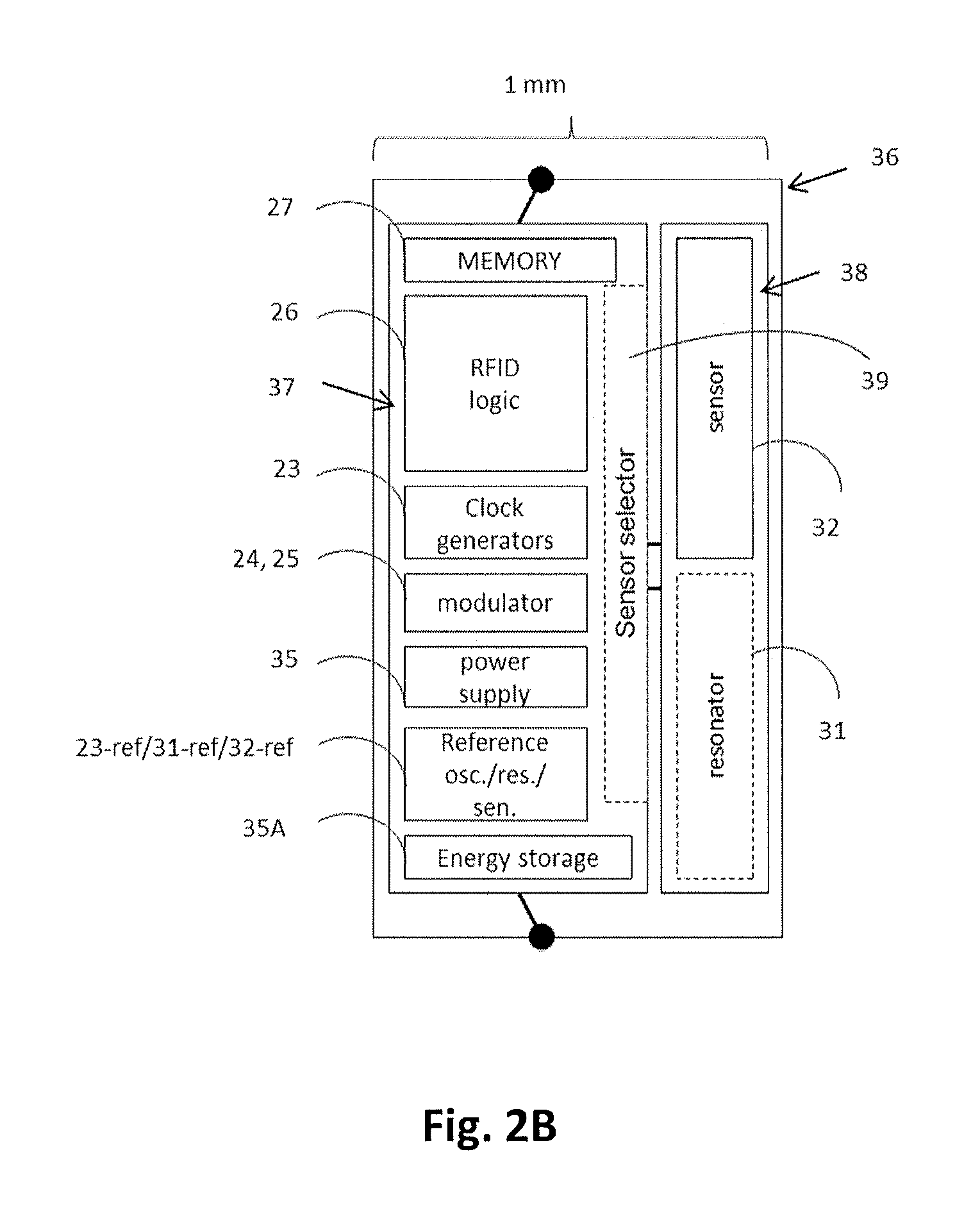Passive RFID sensor tag
a sensor tag and passive technology, applied in the field of passive wireless sensors, can solve the problems of limited read-out distance, limited lifetime, wireless sensors, etc., and achieve the effect of large capacitance and larger amount of energy
- Summary
- Abstract
- Description
- Claims
- Application Information
AI Technical Summary
Benefits of technology
Problems solved by technology
Method used
Image
Examples
Embodiment Construction
[0066]Referring to FIG. 1, an RFID system typically comprises two basic components: an RFID transponder or tag 10, which is located on the object to be identified or at a measurement point; an RFID interrogator or reader 11, which performs the interrogation of RFID tags. In a passive RFID system the RFID reader 11 supplies the tag 10 with essential power in order for it to perform modulation of the reader's interrogation signal. In the case of RFID sensor tags, in addition to just providing a power source and medium for the RFID tags 10 to operate and transmit data, an RFID reader 11 may perform data transmission, which is implemented, in most cases, as a modulation of the carrier signal, towards the tags 10.
[0067]FIG. 2A shows a functional block diagram illustrating a further example of radio frequency identity (RFID) tag architecture. In the illustrated example the RFID tag 10 may comprise an antenna 21 directly matched to the tag's front end impedance (matching circuit is not sho...
PUM
 Login to View More
Login to View More Abstract
Description
Claims
Application Information
 Login to View More
Login to View More - R&D
- Intellectual Property
- Life Sciences
- Materials
- Tech Scout
- Unparalleled Data Quality
- Higher Quality Content
- 60% Fewer Hallucinations
Browse by: Latest US Patents, China's latest patents, Technical Efficacy Thesaurus, Application Domain, Technology Topic, Popular Technical Reports.
© 2025 PatSnap. All rights reserved.Legal|Privacy policy|Modern Slavery Act Transparency Statement|Sitemap|About US| Contact US: help@patsnap.com



